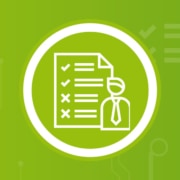Agile methods and Requirements Engineering: A guide for Project Managers
Project managers often find themselves at an interface between constantly changing market requirements and the technical challenges faced by developer teams. While the agile model promises flexibility and adaptability, requirements engineering (RE) offers structured clarity. But how do project managers achieve a balance between these two approaches to ensure efficient, successful project management?
MODEL-BASED REQUIREMENTS DOCUMENTATION
Project managers must often tie together complex technical details and business requirements. Model-based requirements documentation, such as that provided by UML diagrams, give project managers a visual tool for communicating a project’s vision and details to stakeholders in a clear and precise manner.
STRATEGIC ROADMAPPING
A clearly detailed road map is indispensable to project managers. It makes it possible for them to define milestones, allocate resources and monitor project progress. This road map can remain flexible in the agile world, but still provides structure to and an overview over the project’s direction.
INTEGRATING CUSTOMER FOCUS INTO PROJECTS
Project managers often find themselves caught between the customer and the developer team. By integrating RE techniques such as stakeholder interviews into the agile process, project managers have the ability to ensure that customer requirements are properly collected, interpreted and implemented. This maintains customer focus in addition to the role of product owner.
ITERATIVE DEVELOPMENT AND CONTINOUS MONITORING
The iterative nature of agile development makes it possible to identify risks early on, to continuously monitor progress and to take corrective measures where necessary. Integrating RE into every iteration ensures that requirements are always kept up-to-date and relevant.
OPTIMIZING STAKEHOLDER COMMUNICATION
Having an appreciation for RE methods and integrating them into projects makes it possible for project managers to communicate with stakeholders more effectively, to manage expectations and to ensure that all participants are on the same page. Combining together agile software engineering and requirements engineering means project managers have a set of tools and methods for managing projects efficiently, for managing both risks and expectations and for delivering quality solutions which meet stakeholder requirements.










